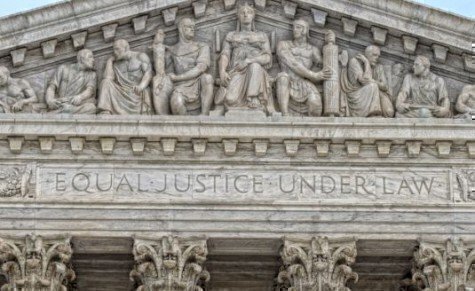The Supreme Court’s expressed hope that lawyers on both sides of the controversy over the birth-control mandate in the new federal health care law would come to an agreement is no nearer realization after six months.
 The two sides are facing a series of deadlines to file new reports in eight separate federal appeals courts on the status of their talks – if, in fact, the talks are ongoing. Their most recent such reports only sought more time to explore potential ways out of what seems like an impasse.
The two sides are facing a series of deadlines to file new reports in eight separate federal appeals courts on the status of their talks – if, in fact, the talks are ongoing. Their most recent such reports only sought more time to explore potential ways out of what seems like an impasse.
And now, the arrival of the new Trump administration in Washington, D.C., may bring a major change on where the federal government stands on the issue – a key part of the Affordable Care Act (popularly known as “Obamacare”) That could delay a final resolution, one way or the other, for several months. In the meantime, some women who work for religious organizations of attend religious colleges that object to birth control as a matter of faith may actually begin to get free access to pregnancy-related drugs and devices while the controversy persists.
It was exactly six months ago that the Supreme Court, without deciding any of the legal issues surrounding the controversy, told attorneys for the government and for non-profit religious employers to make an effort to find common ground. The court itself offered an idea that would assure that women employees of religious hospitals of charities or students at religious colleges could have access to birth control methods, without involving their employers of college administrators directly.
One group gathering of lawyers was held at the Justice Department in Washington on June 20, but it is unclear whether there have been any other joint discussions. In fact, a New York City lawyer for a group of Roman Catholic charities protested to the U.S. Court of Appeals for the Second Circuit in August that the government had not set up a further meeting and had not consulted with the other side before deciding to seek public input on potential revisions of the mandate.
A formal “request for information” was published on July 22, inviting comments on a series of ideas to alter the regulations on how religious employers would be treated under the mandate. Some 54,000 comments came in before the comment period ended on September 20.
Eight separate federal appeals courts now have a total of 20 cases that are awaiting word on whether the two sides can come to an agreement. In the federal government’s status reports in recent months, it has told appeals courts that it is processing the public comments on possible changes in the mandate. No party’s status reports mentioned any further talks.
At this point, lawyers on both sides are facing new reporting dates in the appeals courts ranging from November 30 to various days in December and, in at least one appeals court, not until January 25. The government at one point had indicated it was seeking a common reporting date set at November 30, but that has not become uniform.
Hanging over the future of the mandate, of course, is the uncertainty about where President-elect Donald Trump and his new administration will settle in his expressed desire to get rid of Obamacare entirely. Although he has said since his election that he now wants to keep some of the more popular parts of the new health care law, it is uncertain what ambitions he and the Republican-controlled Congress have for the birth-control mandate after the new Congress assembles on January 3 and the new president is sworn in on January 20.
In any event, the new government cannot simply scuttle that mandate by using a presidential order. That’s because binding regulations are in place that determine when a religious employer is exempt from having to provide contraceptives to its employees or to attending students in the case of colleges. Thus, if there is to be a change, new regulations will have to be drawn up in draft form, and then submitted to the public for comment for 60 days or more.
The Supreme Court, in ordering the lawyers on May 16 to engage in talks about composing their differences, indicated that – in the meantime – religious employers who object to providing contraceptives will not be penalized for not providing such access, but the government will not be barred from arranging with insurance companies running employer benefit plans to begin providing access at no cost to female workers or students of child-bearing age.
Technically, each of the 20 cases now pending in the appeals courts could move up to the Supreme Court, because it had not decided in a final form the seven specific cases it had heard on the mandate. (Not all of the 20 cases now in the appeals courts were appealed to the Supreme Court at its last term.) The appeals courts would probably be the first ones to react to any change that the Trump administration might seek to make in the mandate.
Although the Supreme Court was unanimous in sending the cases back to lawyers to talk about potential solutions, there is no assurance that it would again be unanimous if the issue does reach the Justices again in the future. That could depend on who becomes the ninth Justice to fill the vacancy left by the death of Justice Antonin Scalia.







